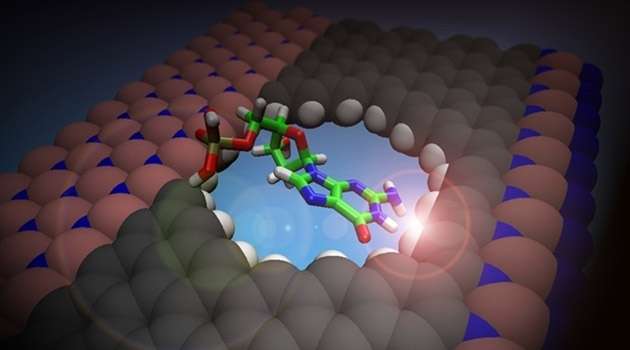Nanosensors and Properties of Carbon Nanotubes (CNTs and CNTs) PhD in Nano Microelectronics
Researcher and author: Dr. ( Afshin Rashid)
Note: The electronic properties of carbon nanotubes are highly sensitive to the chemical environment around the nanotubes. This sensitivity is a suitable tool for using nanotubes in the sensor sector.
Nanosensors Using single-walled semiconductor carbon nanotubes, nanotransistors can be made that can be fabricated by growing CVD on the substrate and connecting a wire to the nanotubes to create a metal / nanotube / metal structure. The effect of applying different voltages is to change the direction. The electrical conductivity of these nanotubes is used in the structure of nanosensors and electronic nanosensors of single-walled carbon nanotubes . A cavity- reinforced semiconductor that reduces the electrical conductivity threefold by applying positive gate voltage to the nanosensor system. In the presence of electronic guidance of nano-sensors, the nano sensor band of the nanotube capacity distance from the Fermi surface, This reduces the number of holes and consequently reduces the electronic conductivity . The Fermi energy of CNT and CNTs nanotubes is converted to the capacity band. This increases the concentration of holes in the nanotube and thus improves the electrical conductivity of the nanosensors.
Carbon nanotubes have a fullerene-like structure that can be closed at the end. The name of these nanostructures is derived from their physical shape in which a graphene tubular sheet with different tubing angles leads to tubes with different symmetries. The angle of tubing and the radius of the tube determine the appearance of metal or semiconductor properties in these nanostructures. Nanotubes are divided into two groups: single-walled carbon nanotubes (SWCNTs) and multi-walled carbon nanotubes (MWCNTs). In multi-walled nanotubes, several graphene sheets are tubed. Carbon nanotubes stick together naturally due to the effect of van der Waals gravity.
Conclusion:
Nano-sensors based on single-walled carbon SWNT nanotubes are less common than devices containing single nanotubes. The samples SWNT mass, the effect of lower molecular interaction between the metal and semiconductor nanotubes. Also, the inner tubes in the SWNT series are not able to interact with the gases; This is because molecules cannot penetrate the SWNT strands.
Researcher and author: Dr. ( Afshin Rashid)
PhD in Nano-Microelectronics




